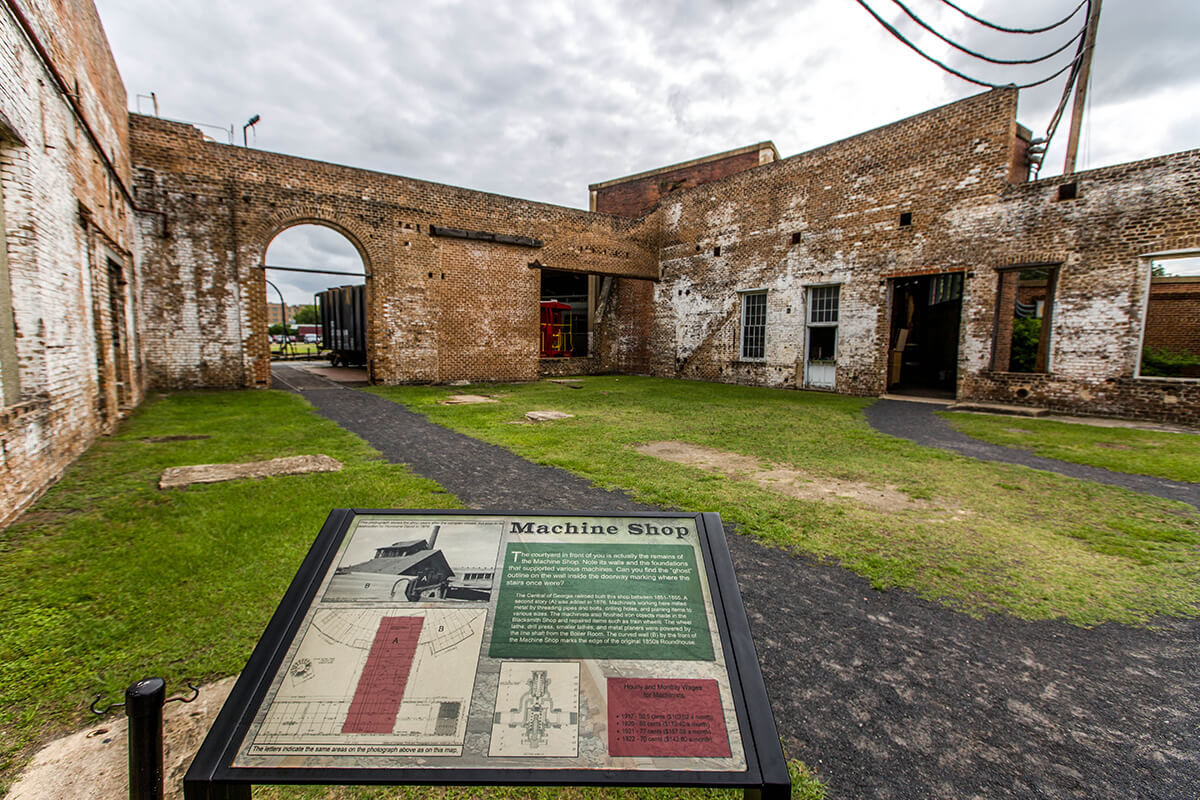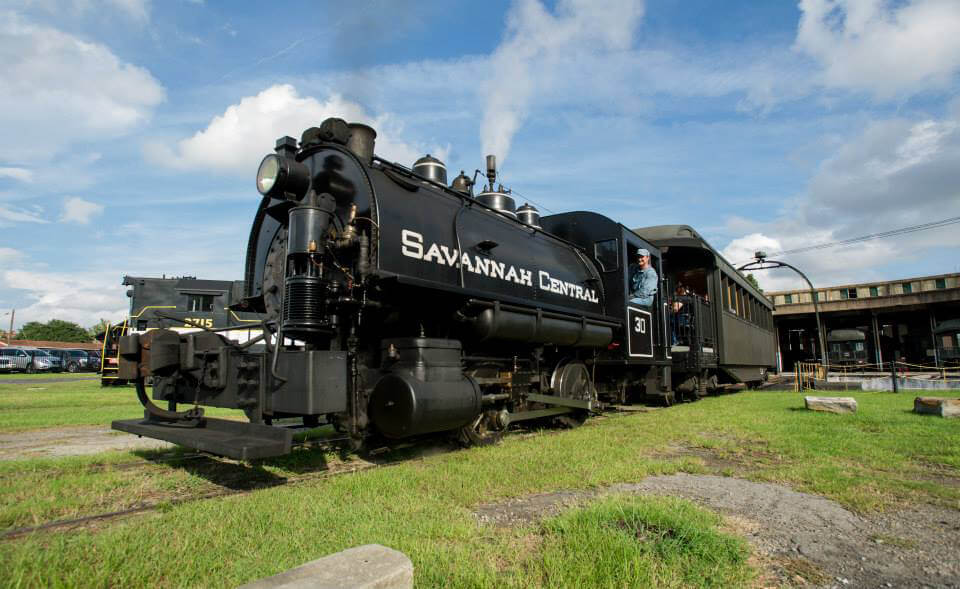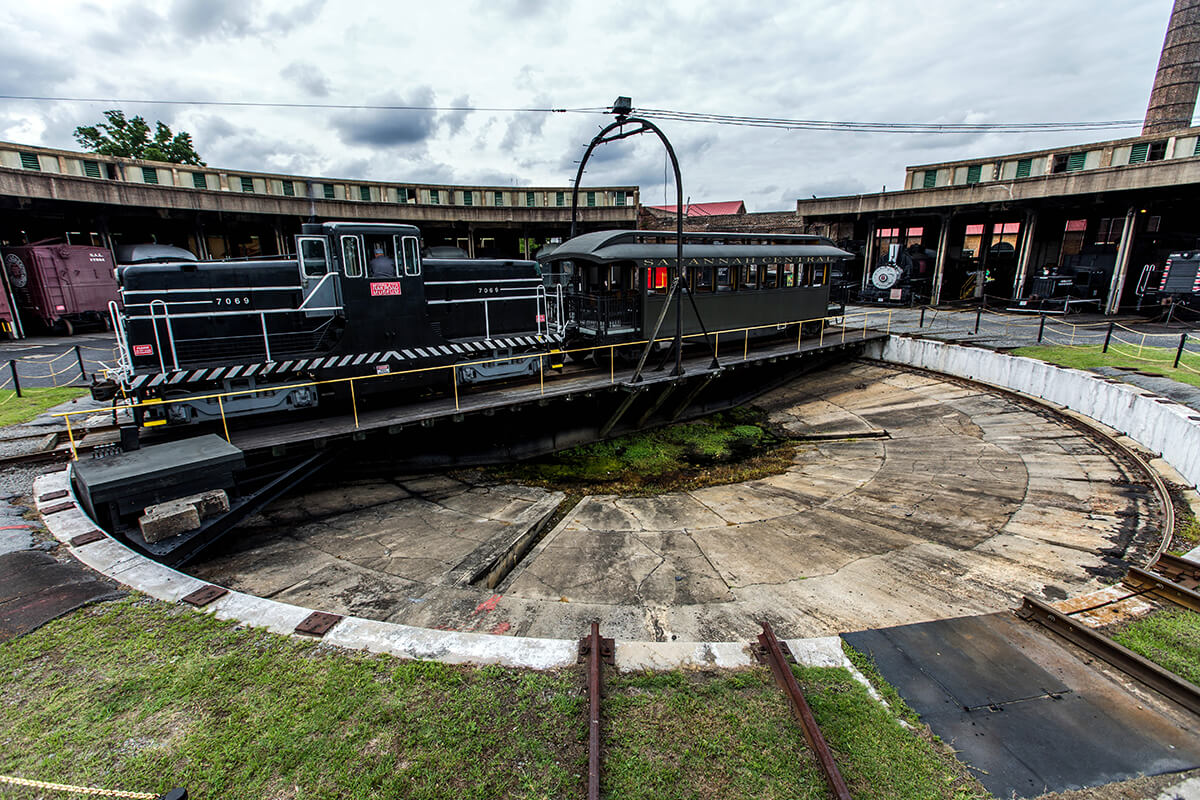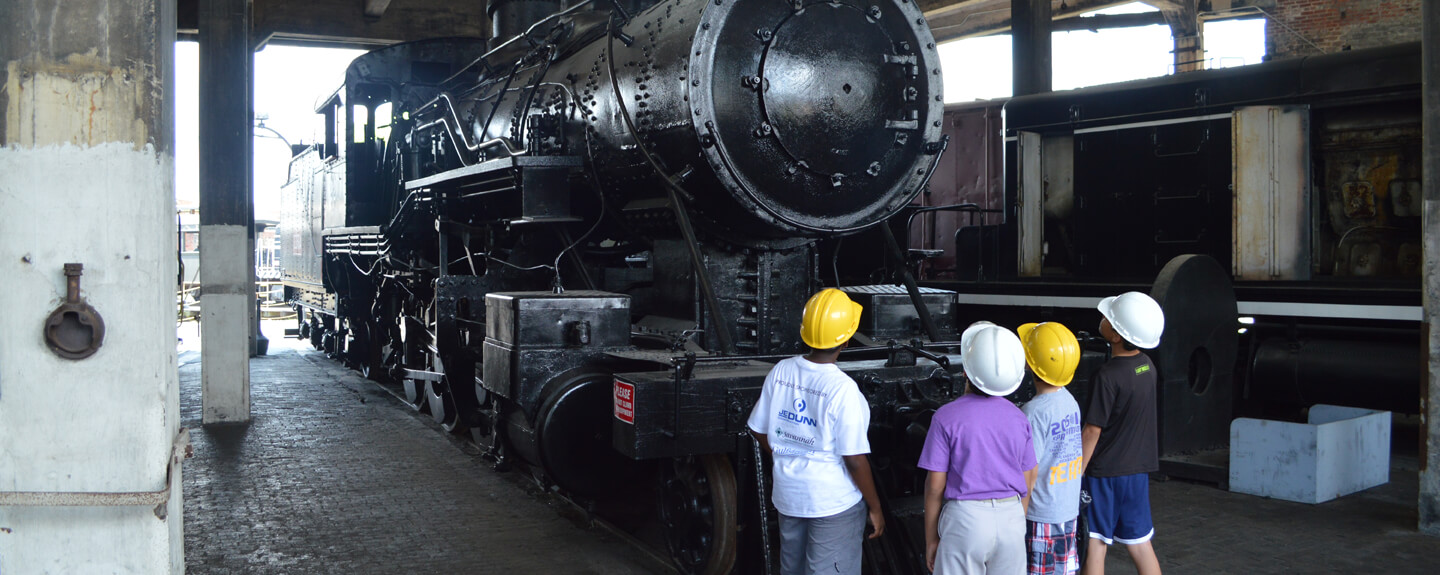
CENTRAL OF GEORGIA
Few cities in America can claim two National Historic Landmark Districts. This status, the highest that can be conferred upon a historic site under the United States of America’s historic designation structure, was given to the Savannah Historic District in 1976 and to the Central of Georgia Railroad District in 1978.
The Central of Georgia Railroad District has been called the finest surviving nineteenth century railroad complex in the United States. It features a number of nationally significant buildings, two nineteenth-century railroad aqueducts, handsome entry gates, and other industrial features on over 33 acres of land. The National Historic Landmark nomination form states, “the Savannah complex is of extreme rarity and of paramount importance to 19th-century railroad history.”
Construction of the Central of Georgia Railroad began in Savannah in 1836 with a goal of connecting Macon to the port of Savannah. The new line reached Macon in 1843. Short feeder lines reached into Georgia’s rich cotton belt bringing the cotton crop to the port of Savannah and the Central of Georgia Railroad and Banking Company became one of the state’s greatest business corporations.
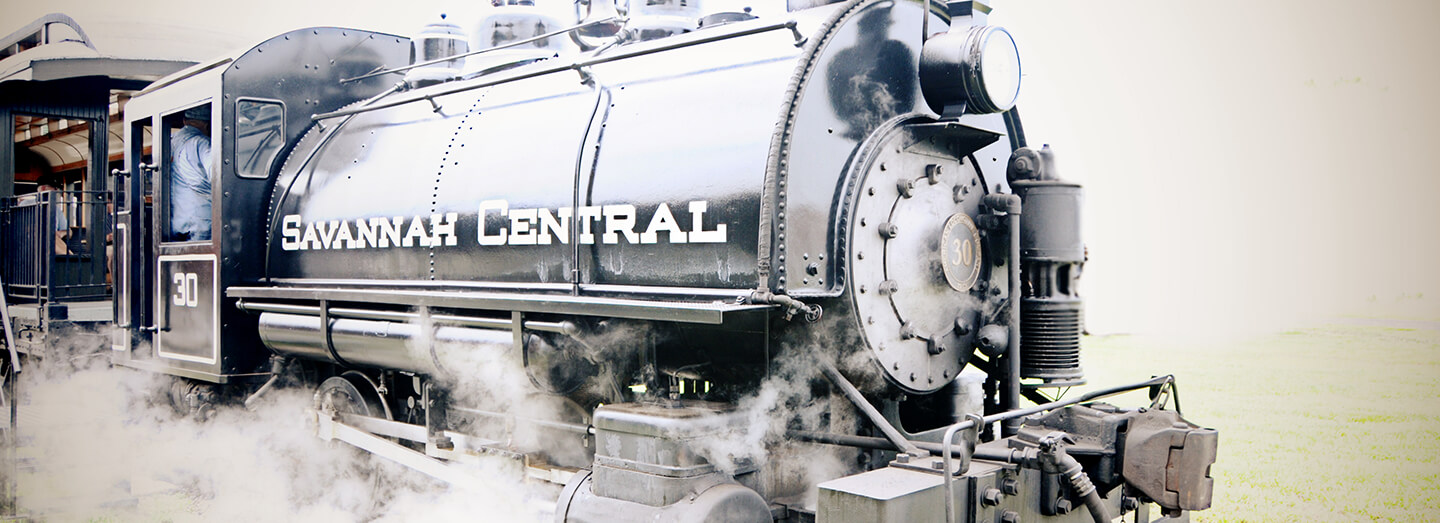
“The Savannah complex is of extreme rarity and of paramount importance to 19th-century railroad history.”
The prosperity of the Central of Georgia was reflected in its outstanding buildings at its central offices and facilities in Savannah. The corporate headquarters were located in the Gray Building, which was built in 1856. This two-story brick building, which features a Greek Revival portico, served as railroad building even into the 1970s as division offices for the Southern Railroad. The building, located at 227 Martin Luther King Jr. Boulevard, is now owned by Savannah College of Art and Design (SCAD) and serves as the SCAD Museum of Art. It is attributed to the architect Augustus Schwaab.
Growth of the Central of Georgia called for the construction of the Red Building, designed by Alfred Eichberg, in 1888. This red brick three-story building is built in the Queen Ann-style and features terracotta ornamentation and colored art glass, which are characteristics of the style. The building, located at 233 Martin Luther King Jr. Boulevard, served as administrative, clerical, and engineering staff offices. It too is owned by SCAD and houses the School of Architecture.
The impressive Head House and train shed from 1860 and 1876, both designed by Augustus Schwaab, are located at 301 Martin Luther King Jr. Boulevard. The impressive shed, which currently houses the Savannah History Museum, is the oldest long-spanned, truss-roofed railroad shed existing in America. The shed features arched openings used for ventilation, and the pattern of arches is repeated in the doors and windows of the Head House.
Perhaps the most remarkable building in this district is the combination smokestack, water tank, and privies, which date from 1855. This edifice is 123 feet tall and is an ingenious engineering achievement. The smokestack serves as an exhaust chimney through underground flues for the blacksmith, coppersmith and boiler shop forges, as well as the boiler for the stationary steam engine in the railroad shops. Surrounding the smokestack are 16 projecting buttresses, which form chambers that served as masonry privies for railroad workmen and were accessible by separate exterior doors. On top of the buttresses is a 16-sided 40,000-gallon cast iron water tank made by David W. Rose of Savannah. This tank supplied water for locomotives and the stationary steam engine.
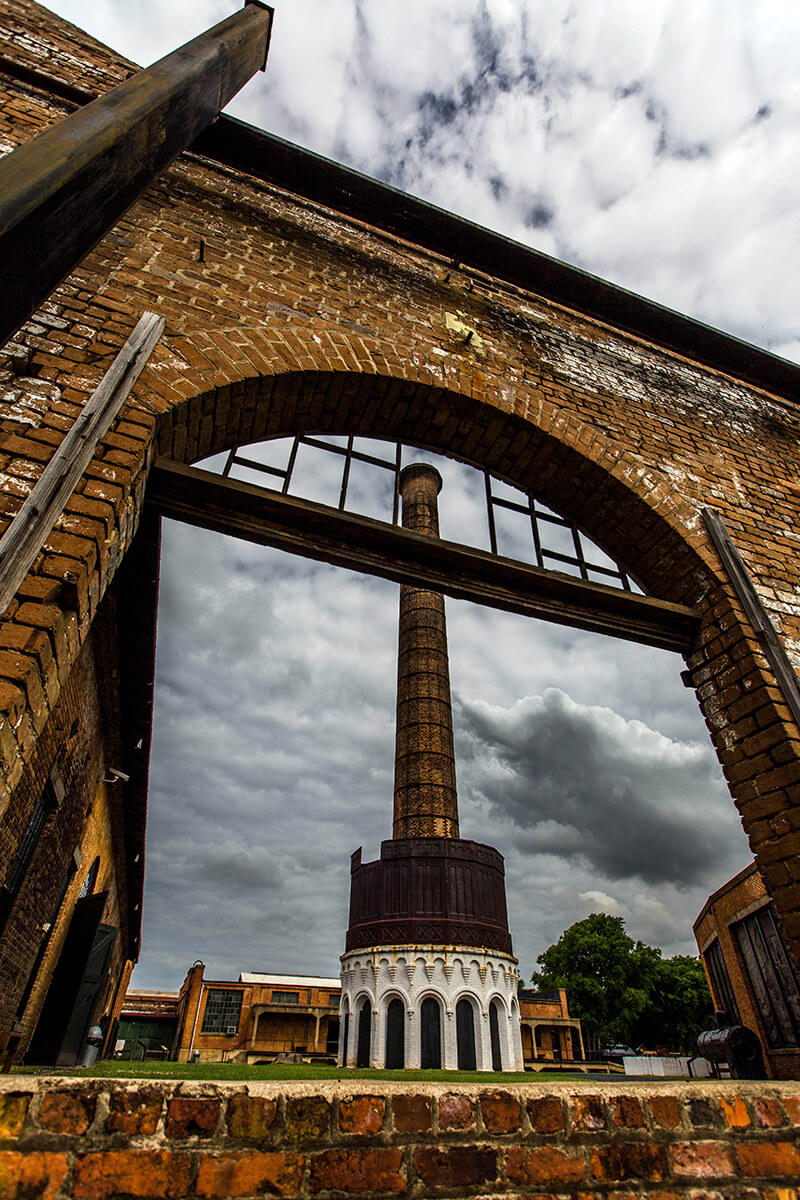
The Blacksmith shop, built in 1855, is another impressive example of antebellum masonry architecture. The building is over 160 feet long and 40 feet wide and features an interesting roof monitor system with clerestory windows to allow light and ventilation.
Built in 1854, the engine room and boiler house has extraordinary brickwork. Its crenellated parapet, corbelled, and arcaded cornice are stylistically related to railroad bridges that span West Boundary Street. These masonry bridges or railroad viaducts are built of Savannah Grey Brick and consist of four arch spans. The first bridge to be constructed was for the main line built in 1853 which led to Macon, Georgia. The second was built in 1860 and led to the Up and Down Freight Warehouses and cotton yard known as the Dooley Yard. These railroad bridges, or viaducts, are some of the finest in the United States. Their design is attributed to the architects Mueller and Schwaab and to the masonry executed by Benjamin F. Armstrong.
Many other fascinating buildings exist in the Central of Georgia Landmark District. The Roundhouse from 1926, the coach and paint shops from 1924-1925, the machine shop from 1855, and the carpentry shop from 1853 (rebuilt in 1923) are all buildings that contribute greatly to this highly significant resource.
Supported by the City of Savannah, key parts of the Central of Georgia Railroad complex are operated by the Coastal Heritage Society as the Georgia State Railroad Museum. In recent years, restoration work has progressed at a steady rate. This unique historic resource offers Savannahians and visitors alike a wonderful opportunity to be educated about an important part of Georgia’s history. The Savannah College of Art and Design has also played a key role in rehabilitating several of the buildings in the Central of Georgia District.
